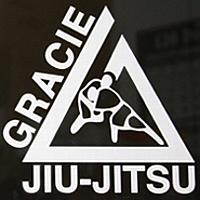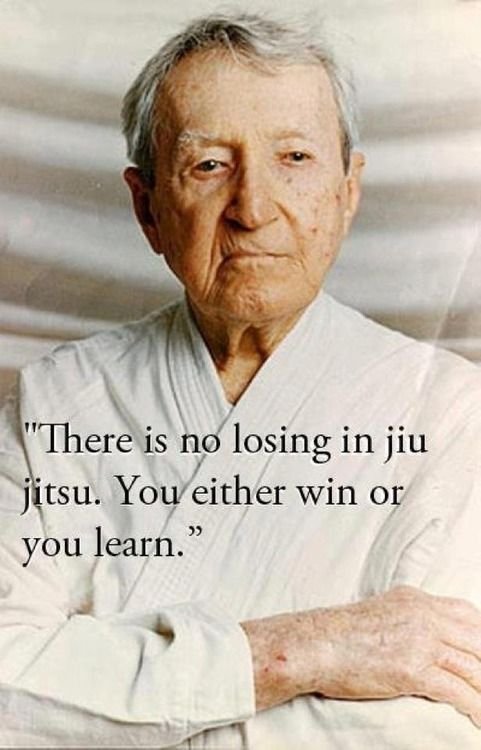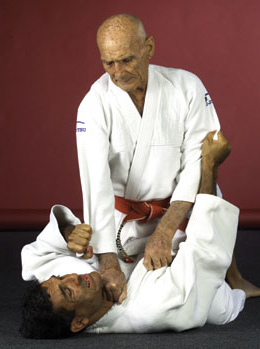A Brief History of Brazilian Jiu Jitsu
A Brief History of Brazilian Jiu Jitsu

This a 3 page piece I wrote a few years ago for extra credit in a college coarse I was taking. As the title says its a brief history so some things will be left out and or summarized. If you enjoy it or have any questions please comment down below. Thanks for reading!
The origins of Brazilian Jiu Jitsu are filled with a rich history that spans multiple countries and multiple martial arts. Brazilian Jiu Jitsu is a martial art that focuses on ground fighting. The basic idea behind ground fighting is the ability to be able to defend yourself or attack your opponent from any position during a grappling exchange. The true emphasis of Brazilian Jiu Jitsu training is to control or defeat your opponent with take downs, throws, trips, ground transitions, and or submission holds. There are several major events that occurred in the history of Brazilian Jiu Jitsu. In order to understand its origins, we must first understand the origins of Kodokan Judo and it's creator Jigoro Kano.

Jigoro Kano was a Japanese martial artist who was born on October 28, 1860. After several years of studying the traditional Japanese Jiu Jitsu styles of Tenshin Shin'yo Ryu and Kito Ryu, Kano began modifying techniques to develop his own martial art. This martial art would later be know as Kodokan Judo. One of the main differences between Kodokan Judo and traditional Japanese Jiu Jitsu styles is Judo's emphasis on “randori” or practicing techniques on fully resisting opponents. This training method made Judo practitioners very effective in real life altercations and especially in tournaments. Kodokan Judo practitioners started winning most of the major Japanese Jiu Jitsu tournaments of that time period and Judo's popularity started to spread like wildfire. This led to many Japanese Jiu Jitsu practitioners to convert to Kodokan Judo. Jigoro Kano soon had many students who wanted to study Kodokan Judo under him. This led Kano to establish the Kodokan Institute in 1882. The institute still exists today and is an eight story building in Tokyo, Japan with 1,206 mats across five main training halls. Many Judo practitioners have studied Judo at the Kodokan Institute, but one student stands out above the rest and his name was Mitsuyo Maeda.

Maeda was a Japanese martial artist who was born on December 18, 1878 in Funazawa village, Hirosaki, Aomori Japan. Like Jigoro Kano, Maeda began his martial arts journey training in traditional Japanese Jiu Jitsu styles. Maeda moved to Tokyo in 1894 to attend Waseda University. In 1895 he began studying Judo at the Kodokan Institute. At the Institute, Tsunejiro Tomita was assigned as Maeda's instructor. Tomita is believed to be the first person to enroll at the Kodokan Institute and he was one of Kano Jigoros first black belts. (Mitsuyo) Under Tomita's instruction, Maeda became one of the top Judo practitioners in the country. Maeda won many Japanese Jiu Jitsu tournaments and even impressed Jigoro Kano with his accomplishments. In 1904 Jigoro Kano asked Tomita, Maeda, and another Judo practitioner named Soishiro Satake to travel to the Untied States to spread the message of Kodokan Judo. They agreed to the task and set sail for New York city. They stayed in the United States for a few years preforming demonstrations and teaching Judo for money, but Judo's popularity just wasn't spreading in the United States like it did in Japan. From 1908 to 1914, Maeda began traveling the world competing in wrestling matches, no-holds-barred fights, and preforming Judo demonstrations. Some of the countries Maeda competed in were France, Mexico, Chile, and Cuba. Through Maedas travels, he developed a fighting style that was well rounded and very effective in real life self defense scenarios. In 1914 Maeda traveled to Brazil to teach his style of fighting.

On November 14, 1914 Maeda arrived in Porto Alegre, Brazil. Maeda traveled Brazil for a little over a year teaching Judo and competing in no-holds-barred fights. Maeda earned a reputation in Brazil as a very skilled fighter and was very popular in the media for his demonstrations. Around 1916 Maeda traveled to Europe. Little is known about his trip to Europe, but it is known that he traveled to countries such as England, Portugal, Spain, and France before he returned to Brazil in 1917. When Maeda returned, he began preforming demonstrations throughout Brazil. In 1917 Maeda preformed a Judo demonstration at the Da Paz Theatre in Belem do Para, Brazil. Carlos Gracie, a 14 year old Brazilian teenager was in attendance. Gracie was amazed by what he had just seen and asked Maeda to teach him. Maeda agreed to train him. Gracie trained under Maeda for several years until he moved to Rio de Janeiro, Brazil in 1921. Carlos did not know very many people in Rio de Janiero, so he needed training partners to practice and spare with. So he began teaching his younger brothers Oswaldo, Gastao, Jorge and Helio the techniques he had learned from Maeda.

Helio was the smallest of the Gracie brothers and had a hard time utilizing a lot of the Judo techniques on larger, stronger, and faster opponents. This led Helio to start modifying techniques to work better for his body type. He started this by modifying techniques to utilize leverage and timing as opposed to strength and speed. Next he focused the bulk of his training on take downs, ground transitions, and submissions. Helio soon found that this method of training helped him defeat much larger opponents relatively easy. This sparked a fire in the Gracie brothers, they all began focusing their training on ground fighting and the development of ground fighting techniques. In 1925, the Gracie brothers founded the Gracie Academy in Rio de Janiero, Brazil. Helio famously described Brazilian Jiu Jitsu by saying this, “Jiu-Jitsu is personal efficiency to protect the weaker, which anyone can do. It is the force of leverage against brute force.” Many people believe that Helio Gracie is the most important figure in the history of Brazilian Jiu Jitsu. Helio was so devoted to the art that he was on the mats teaching techniques up to 10 days before he passed away at the age of 95. Helio's contributions to the art are endless and many people refer to him as the father of Brazilian Jiu Jitsu.
It's hard to say what the single most important event in the history of Brazilian Jiu Jitsu is, but some people would argue that Carlos Gracie learning Judo from Maeda is the most important event. Others might argue that Helio’s emphasis on ground fightinhg was the single most important event in the history of Brazilian Jiu Jitsu. Whatever the case maybe, the people of Brazil and all of the Brazilian Jiu Jitsu practitioners in the world are lucky that things worked out the way that they did. Although there is more to the origins of Brazilian Jiu Jitsu, these are the most of the major events that took place in its history.

thanks for teaching :)
Thanks for reading! :)
Thanks for this information 😊
Anytime! Thanks for reading!
Sempre é bom saber que o Jiu Jitsu Brasileiro representa muito bem o País!
(ICO) WELL - Airbnb of Healthcare

powered by blockchain
https://goo.gl/VtQ6rF ----- WEBSITE
Excuse me for advertising. It is necessary to earn. I'll try to stop soon. :)